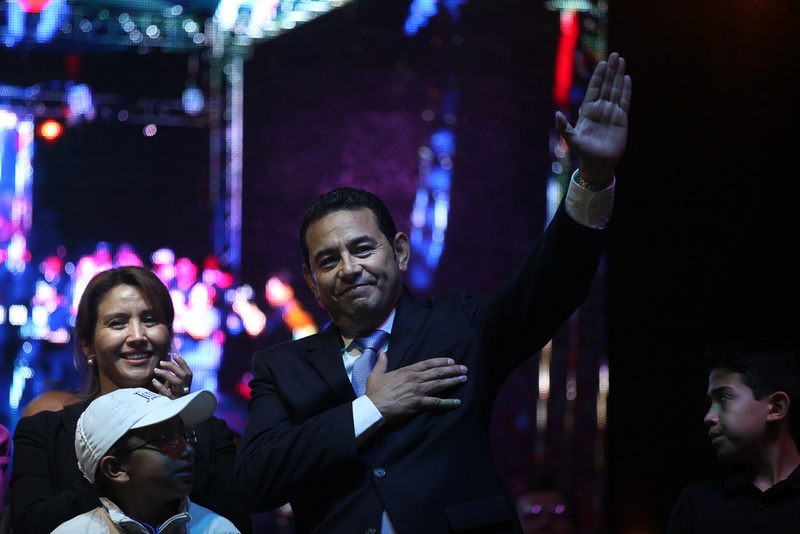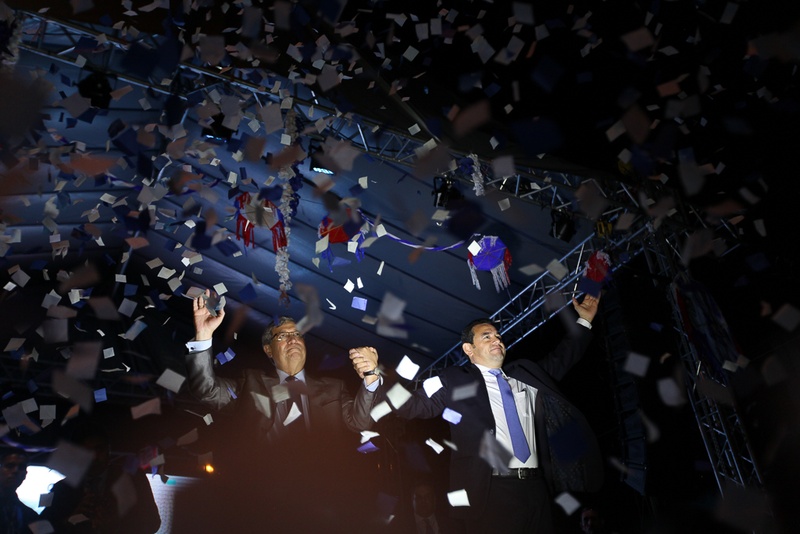OpenGov Voices: What was the real cost of Guatemala’s elections?

On Oct. 25, Guatemala elected comedian and businessman Jimmy Morales as the new president. Morales, who is 47, is a business administrator working toward a Ph.D. with no experience in public office — but he does know how to behave in front of the cameras. His party, FCN-Nación (Frente de Convengencia Nacional, “National Convergence Front”), was up against Sandra Torres, a businesswoman who was the ex-wife of former president Álvaro Colom. Despite Torres’ experience managing some fields of the government during 2008-2012, FCN-Nación received more than 67 percent of the vote.
Why did Guatemalans choose Morales among 14 candidates from 16 parties? (Yes, 16 parties.) People who supported Morales didn’t care that he was connected with militaries with alleged human rights violations, or that he lacked experience. They liked him because he was not a traditional politician: It was the first time he ran for office, he has never been a member of traditional parties that had been in the government, he pledged to fight corruption and he had a simple campaign.
During the elections, each of the 12 men and two women could invest up to Q57 million ($7.3 million USD) in the quest to become president of Guatemala — but one broke the rules.
Manuel Baldizón, from Lider (Libertad Democrática Renovada, “Renewed Democratic Liberty”), a right-wing party that used populist speech, led the polls during much of the election. In the 2011 election, he ran against Otto Pérez Molina, the former president who is currently in jail awaiting trial for tax fraud, and lost. Soon afterwards, on Nov. 6, 2011, Baldizón began campaigning for his 2015 run. But according to election law, this was well before the official campaigning period had begun. After running and losing this year, he quit his party entirely in September, thus avoiding problems with the Electoral Supreme Court (Tribunal Supremo Electoral, TSE) that would have penalized him as a political figure for campaigning before the official period started. TSE could not take him to court as a private citizen.
To avoid more restrictions, his party turned to different foundations or NGOs to sponsor activities so it didn’t have to report to the TSE. Baldizón also financed CNN (Corazón Nueva Nación, “New Nation Heart”), a party that was led by militaries and used the same colors (red and white) as his own. CNN paid for ads supporting Baldizón, so this money would not lead back to Lider. He spent, according to the TSE, at least Q61.4 million ($7.87 million USD), what would have been well over the legal spending limit. He lost out to Torres and Morales despite this, who had 5,958 and 205,746 more votes than Baldizón, respectively.

In the runoff, according to Mirador Electoral, an NGO that audits the electoral process, Morales and Torres spent Q21 million ($2.69 million USD) total.
But what was the real cost of the 2016 campaign? Was the source of the money legal? We don’t know. The International Commission against Impunity in Guatemala (CICIG, in Spanish), which was created by the UN, analyzed the Guatemalan electoral process and said that most of the money came from corrupt sources and organized crime. CICIG described the price of the campaigns as unreasonable and advises that the model we use opens the door to illegal money.
In Guatemala, a party will receive two dollars per vote if they get at least 5 percent of the total or one member of Congress. That’s all. Most of the money comes from private sources — not all of them legal — and public funds that cannot be used for supporting electoral campaigns. The Electoral and Political Parties Law forbids foreign money, anonymous contributions and individuals from giving more than 10 percent of the limit.
Guatemalan citizens want to change the rules, but it has to be done through Congress, which does not want more restrictions. Congress think the system works, but maybe that’s because the system works only for them.
Interested in writing a guest blog for Sunlight? Email us at guestblog@sunlightfoundation.com

